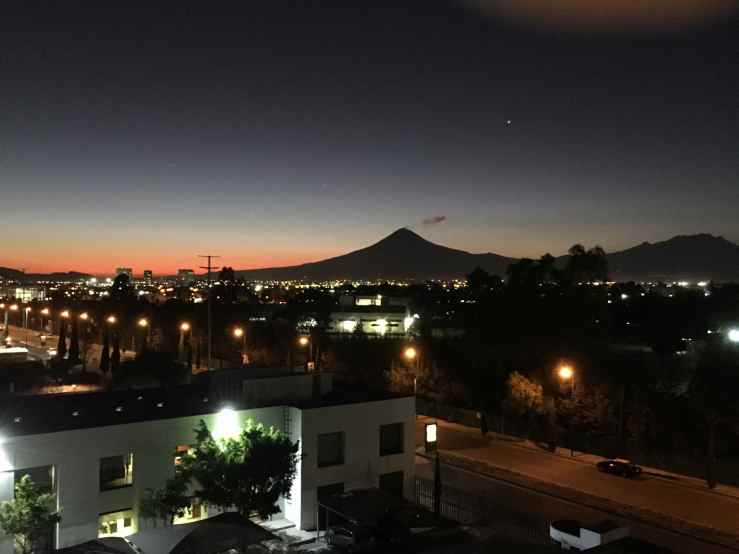
I wake up early today, and watch the morning mist slowly encircling Popacatépetl until the volcano is visible no more.
As I stretch my legs in bed, I notice that the old stiffness in my calves and thighs is back. My brain feels fuzzy too, wreathed in its own invisible fog again. The numbness is back in my fingers, and the intermittent pain in my arms, along with my old familiar – the crushing fatigue that I had almost, blissfully, forgotten. Sore, scratchy, sandy eyes, too, despite a good seven hours of solid sleep.
So this is what people mean when they talk of the roller-coaster ride after a stem cell transplant. The niggling worry – will it work or won’t it? Should I already be feeling better? Am I doing the right things for my new immune system? Am I normal? Or at least, normal for MS and HSCT.
Why are my MS symptoms back today with a vengeance, while some others here are already enjoying immediate benefits from their stem cell transplant? Is this the crash after the steroids? I am now sleeping through the night again, with none of the more vivid steroid dreams, or the hourly awaking.

So maybe the strange titanic energy that seized me sometimes over the past few weeks, despite the chemotherapy, was a chemical energy that is now dissipating fast.
Perhaps that was why I was too tired to write anything at all yesterday, laying slumped on the sofa for much of the day. The goddess Mnemosyne from Greek mythology has deserted me, and with her, the river I drank from to refresh my memories of the past. Her acolytes would have known to drink from the River Mnemosyne and not the River Lethe, which dead souls sipped from so they wouldn’t remember their past when they were reincarnated. Perhaps I have sipped the bitter waters of the Lethe instead today by mistake.
The Greeks considered memory so essential – and the telling of myths or stories – that Mnemosyne was revered as a building block of civilisation, for the stories we tell ourselves about ourselves, that create us and shape us and mould us through life. Memory sculpts us and hones us, and purifies us to our essential selves. Without memory, we are no longer ourselves. Dementia takes away the person that we love. They no longer know themselves or us; their lives lived in a permanent, frightening fog. And MS has made many of my own memories foggy, so that even some of the best times lie shrouded in the mental mists.

In the fifth century before Christ, the goddess Mnemosyne was worshipped in the cult of Asclepius that formed in Ancient Greece. Asclepius was the god of medicine: that vital god who could heal the sick. It was for him a family business, just as it is at Clinica Ruiz today.
Asclepius was a fecund god. His daughters were Hygieia, or hygiene and cleanliness, Iaso the goddess of recuperation, Aceso, the goddess of healing and Aglaea, the goddess of beauty, and Panacea, my favourite, that goddess of the universal remedy, which in my case is hot, milky, sugary tea, that drink of the gods.
I think of the beautiful daughters of that god today, often. Every time I wash my hands or squeeze more antibacterial gel all over my fingers and palms, as if I could generate my own heavenly force-field of cleanliness to ward off any germs while my new immune system grows in strength.
You will still recognise the rod of Asclepius today. It is pictured on almost every pharmacy sign, a universal symbol: the staff entwined with a snake that remains the symbol of medicine and healing.

This morning, I go with my nurse Joy to see our own modern equivalent of Aclepius here in Puebla, Dr Guillermo Ruiz, to interview him for a BBC Radio 4 documentary that I am making about stem cell transplants, and the science behind them.
His father founded the Clinica Ruiz in 1920, and he, his brother and his son form three of the generations of Ruiz here. Their business is healing, and they do it well. The clinic is spotlessly clean, and the staff endlessly patient and helpful, never rushing and always willing to answer questions, however basic or complex.
I ask Dr Ruiz if I should already be seeing benefits from HSCT, and tell him I worry because I haven’t – yet. Or at least, I did straight after the chemo, when my head cleared and my energy went up, even as I spent hours feeling nauseous or vomiting. At least for the four chemo days, I managed to be sick with a clear head.
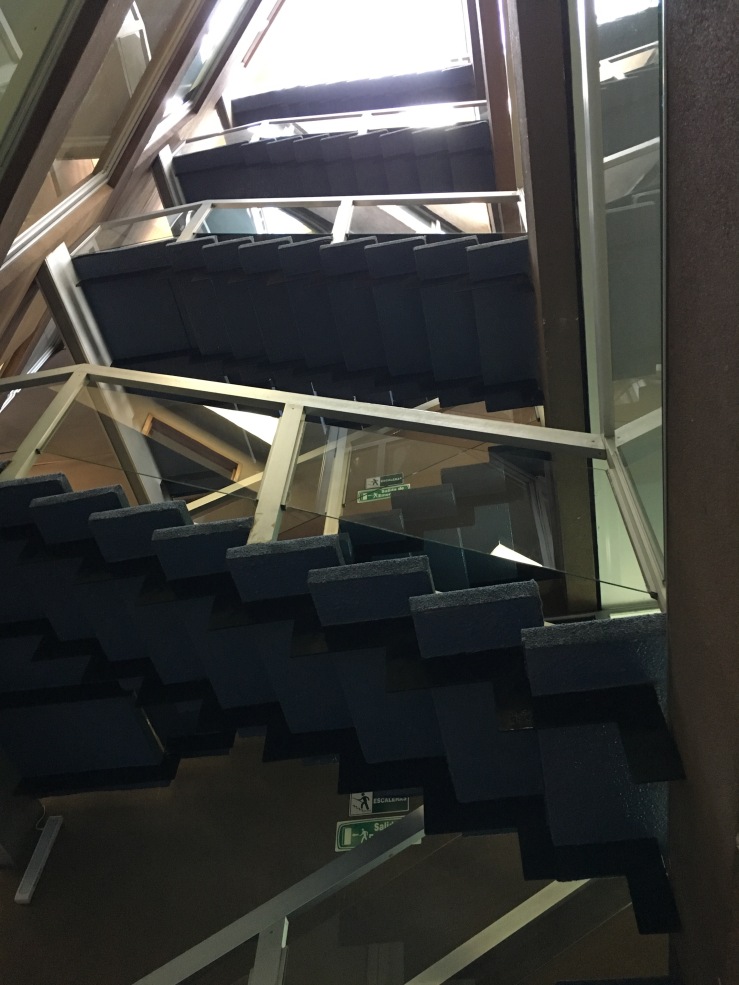
Dr Ruiz is avuncular and reassuring, and tells me that between 15 – 20% of stem cell transplant patients will see immediate benefits after HSCT. But for most, the main improvements will come at between 9 – 12 months after the transplant. So October or November or December. That would be a Christmas present I could treasure for the rest of my life.
So I am not unusual, and the old MS symptoms may come and go for some time. And of course, I don’t know yet whether I will be among the lucky ones for whom the stem cell transplant works to halt progression, and perhaps even reverse symptoms. All I can do is wait, hope and pray. And encourage the stem cells to grow and prosper, and build up their armies to defeat the insurgent disease.
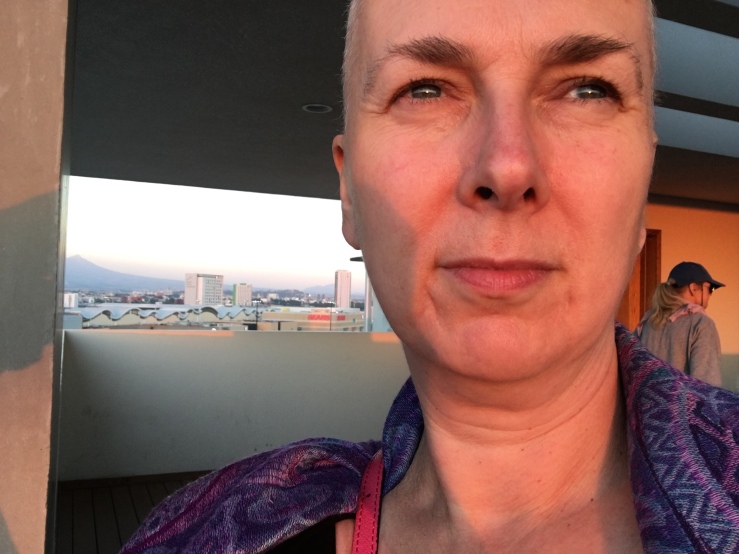
And of course, I shall treat my new immune system with the greatest of care. It will only be fed the healthiest food (with the occasional exception of Jaffa Cakes and perhaps a very rare chocolate digestive), and it will never ever smoke a cigarette again. Although I am very much hoping that it will one day like champagne or prosecco or Sekt again, as the rest of me is rather fond of bubbles.

As Joy and I leave Clinica Ruiz and emerge into the bright sunshine, I feel immense relief. I haven’t done anything wrong. The last blood tests this week showed that my new stem cells are indeed working to rescue the old immune system battered (intentionally) by the chemotherapy and to create a new immune system that works. I just need to be patient.
But I am not a patient patient. Boarding school taught me the art of waiting from the ages of 10 to 17, but I still crossed off every single day of term on a tiny countdown calendar until I could see my parents again.
If I could, I would travel today to say goodbye to Popacatépetl, but the journey there is several hours, and Joy very sensibly counsels against. So I ask if we might go instead to see the world’s smallest volcano. It’s in the nearby suburb of Cholula, and Joy indulges me with a smile and a wave to a passing taxi.

When we get to the volcano, I try not to laugh. I don’t want to offend the Cuexcomate volcano, but it is tiny. Liliputian. Minute. OK, so it’s bigger than me, but as volcanoes go, this is a tiddler. It is, says the poster next to it, just 13 metres or 43 foot tall, its diameter 23 metres or 75 feet. And the name comes from the word for bowl.
We climb up the staircase and peer inside. You can climb down a staircase to the very bottom of the crater. But my legs are so jelly-like today that I don’t trust myself to climb out again, and it might be embarrassing to have to call out the Cholula fire-brigade to rescue me from inside the world’s smallest volcano.

So I peer down for a long time instead, and try to imagine what it must have been like for the people of Cholula in 1664 when Cuexcomate was formed as an offshoot during an eruption of Popocatépetl himself. Finding yourself living next door to an unexpected volcano, however small, must be quite disconcerting.
As beer drinkers will know, 1664 was also the year that the Kronenbourg brewery was formed in Europe by Geronimus Hatt in Strasbourg. The Hatt family remained brewers for some eight generations, with a Hatt at (or should that be on) the head of the company until 1977 or so. A random fact that has lodged in my random brain from a trip to Strasbourg to cover the history of wine and beer in the region while I was the BBC correspondent in Bonn. Why do I remember that, when I was locked out of my BBC account recently because I couldn’t recall my current password?
Today, the little volcano sits quietly, obediently, in the sunshine. It is inactive and lets off no steam. It is now a tourist attraction outside a school, although the playground is quiet and equally inactive. Joy tells me the pupils always have the last Friday of the month off.
So what of Cuexcomate’s rather more active father, Popocatépetl? His legend is mighty, and has inspired poets and writers through the ages.
His name means Smoking Mountain. And the volcano I wake up to with such excitement here every morning is not alone.
Popocatépetl – almost 18,000 feet above sea level – sleeps next to his great love, Iztaccihuatl or Itza. Her name means ‘white woman’, and she is tipped with a white cap of snow, even in this gentle January warmth.
While Popocatépetl stands tall and triangular like the child’s drawing I remember sketching as a seven year old, when we learned about volcanoes in primary school (is that why I came to be treated here? Perhaps nothing is random after all – this was always my favourite volcano, his very name mimicking the puffs of smoke and ash that he regularly exhales).
But Itza – with her four peaks – is said to be a sleeping woman, with each peak representing first her sleeping head, then her chest, then her knees and her feet.
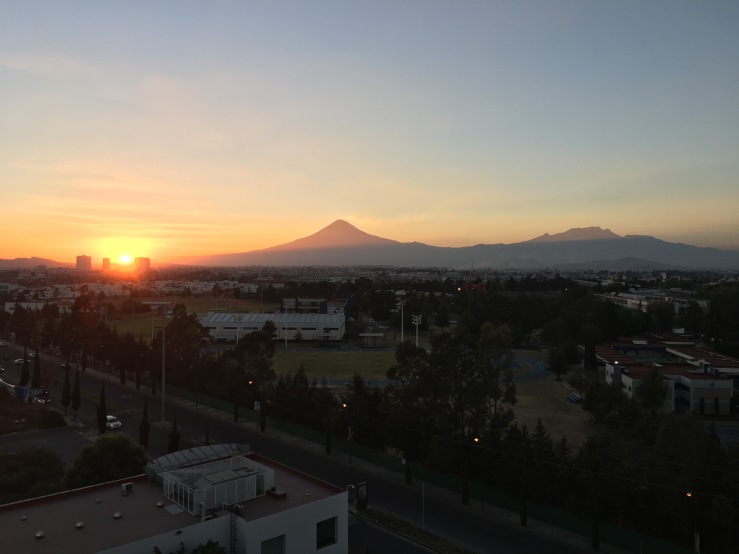
Aztec legend has it that the two volcanoes were once human, and deeply in love. They were the Romeo and Juliet of their day. He was a brave young warrior, and she was a princess. They wanted to marry, but her father demanded the young Popocatépetl prove himself first in battle against the enemies of their tribe.
So as any young romantic warrior would, he sets off to do battle and to prove himself, and is victorious. But a jealous rival sends back false news (not such a new story after all) that Popocatépetl has been killed. Back at home in her palace, his princess dies of a broken heart. When the young warrior returns home, he discovers that his one true love is dead.
Stricken by grief, Popacatépetl carries his beloved’s body high up into the mountains and builds a funeral pyre. There he tenderly lays down her body on the pyre, and then his own, lying next to hers, so they can be together in death.

Seeing this, the gods are touched, and decide to show mercy. They turn the human lovers into mountains instead, so that they can rest together for eternity. Together at the dawn, and together at the going down of the sun each day.
And there they remain to this very day, Popocatépetl watching jealously over his sleeping princess, with our warrior sometimes smoking and grumbling gently, for his princess sleeps on long after the dawn and into the day, while he waits for her to re-awaken.
Tonight at sunset, we who have lived long in the shadow of our own unpredictable MS gathered on the rooftop one last time. We paid our respects to the real volcanoes, which have dominated our horizons and my dreams for this past month, and to drink a little champagne or beer.
I celebrated our last sunset with one very small bottle of Coke, and I do hope that my adolescent stem cells won’t object.
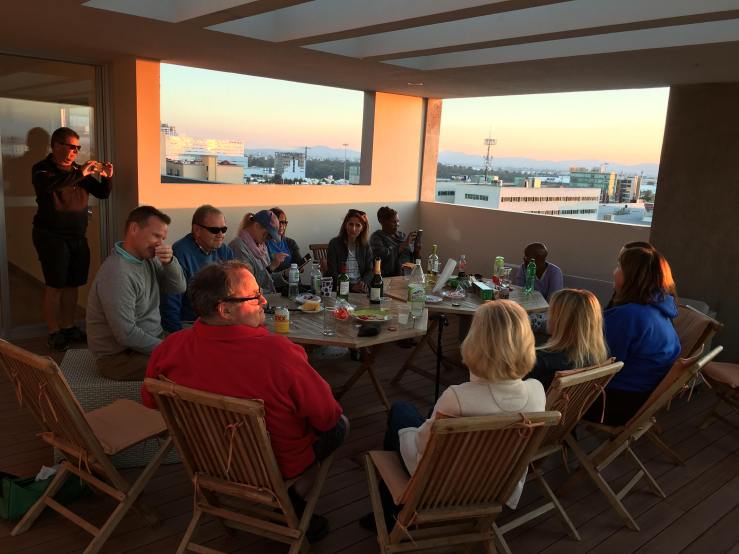
Most here are couples, from the UK, America and Norway, as well as Marion and her mother Ann from Kenya. Most of the patients are women, for we have the dubious global honour of forming the majority of those with MS. For the most part, it is their husbands or in one case, a father, who have accompanied them here, and I’ve been struck each day afresh by how tenderly these carers care for their patient, just as Joy has done for me.
Tomorrow, Joy and I shall say our farewells, as she goes on to look after her next patient.
Over the past month, Joy has become a friend as well as my nurse and constant companion – and the maker of the best guacamole I have ever tasted. I shall miss her. But I know we shall stay in touch.
For the other carers, their job is not yet done. Like Popocatépetl, they will watch over their lover, for as long as it takes, and throughout the highs and the lows of the coming months, watching tenderly for signs of a reawakening to health.
In the afternoon tomorrow, just before sunset, we shall gather again to go to Mexico City to fly back home, scattering over continents, yet united in our hopes and dreams.
I feel strangely reluctant to leave. This quiet flat has become my home, and my companions on the roof tonight my stem cell family, to whom I am bound, if not for eternity, then at least for the rest of this life. We share a rebirth-day, after all.
Only they truly know the hopes and the fears that we have had in common for this past month, and perhaps from the moment of diagnosis. The nervousness ahead of HSCT, the broken nights and the psychedelic steroid dreams. The discomfort of the PICC line, that small serpent in the chest that helped the sweet healing chemo poison to flow into our veins. The unspoken worries and the knowledge that some of the biggest challenges still lie ahead.
And only they will truly understand the disquietude of the months to come as we go home, and wait and hope, and see if we can cross together from the Kingdom of the Sick back to the Kingdom of the Well.


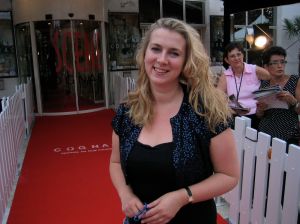
Oh goodness, you’re coming home already. Do take care and do, please, take it easy. I shall miss your pictures of Poapcatépetl in the background, a picture now forever in your memory bank, but look forward to following your continuing recovery. Bon Voyage.
LikeLike
Look up David Wheldon (retired consultant microbiologist and metaphysical poet) and his work with chlamydia pneumoniae and MS. He cured his wife (my sister) – and others – but neurologists closed to Cpn research.
LikeLike
Good luck Caroline!
LikeLiked by 1 person
Safe travels home 💗 Hope the trip home isn’t too exhausting! I’m sure those little Stemmies are growing stronger day by day and you’ll soon be feeling the difference.😉
LikeLike
Really pleased to hear that you are coming back tomorrow – St Augustine said ‘Patience is the companion of wisdom’ while Shakespeare’s Othello said ‘ How poor are they that do not have patience -what wound did ever heal but by degrees’ – well, all I know is that you have patience in spades – Howard
LikeLiked by 1 person
Your diary has been engaging and uplifting. Thank you for sharing your innermost thoughts and hopefully giving comfort to others who find themselves in a similar predicament. As Dave Allen used to say “May your God go with you.”
LikeLike
Safe journey home caro dear. Xx
LikeLike
Good luck Caroline, and thank you once again for the amazing narrative you have provided – I will continue on my own HSCT journey a much more informed and reassured warrior when I too get to start this same process 🙂 You’ve made it much less scary for me 🙂
LikeLike
Glad you are on your way home, keep us all your followers informed. I’m glad I’m not the only one 2 have strange dreams on steroids (IPF), for 6 years mine normally seem 2 be strange hotels, sharing with loads of people & going through wardrobes 2 the loo & shower, may be from staying in many hotels around the world. My farther in law had MS in late 80s, I’m now using his old black stick like yours. Take care hope you get home OK.
LikeLike
Welcome home dear. Big hugs. Shall keep in touch to ensure you have whatever you need.
xxx
LikeLike
I’ve thoroughly enjoyed reading the pieces that you’ve posted in the last weeks; the writing has been beautiful, whilst your calm explanation of process and the sharing of personal insights has been a great help.
I was wondering if you could give me some advice?
I’m based in Scotland, with SPMS at EDSS6 – while the rest of the UK are making tentative steps in delivering AHSCT on NHS, the devolved health service in Scotland has no real precedent or clear path to treatment – I’m pursuing treatment in Scotland, supported by my neurologist, but even ‘if’ things were to develop positively it would still be at a snail’s pace!
So Plan B using private healthcare abroad is looking like being my next step, however …
I’m married with two school-age children, which pretty much precludes my wife joining me as my carer for the full term at Clinica Ruiz – could you possibly mass me the details of the agency that put you in touch with Joy?
Kind regards and thanks in advance.
LikeLike
Only just remembered I never replied – apologies! Yoselim (Joy) is a nurse at Clinica Ruiz, and came to me via Danielle at the clinic. So the carer/nurse is very easy to hire. She was wonderful! Hope that whether you go to Clinica Ruiz or manage to persuade the NHS that all goes well for you. I am now three months post HSCT and some things (brain fog, fatigue) are better but others are not yet (walking, balance, tinnitus) but am v hopeful that it has halted progression. Even if that only lasts for a few years, I’ll be very grateful for that. Wishing you all the very best on your journey! Caroline
LikeLike
Dear Miss Wyatt, get well soon eh so you can have a few more adventures like the ones in your VERY impressive blog.
I think you probably will if I’m honest…… 🙂
All the best
Anthony, Glasgow
LikeLiked by 1 person